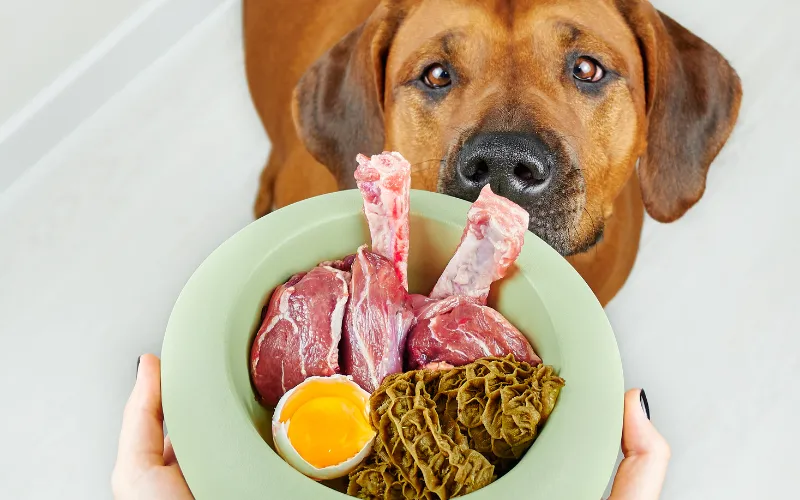7 Common Mistakes to Avoid When Starting a Raw Diet for Dogs
Switching your dog to a raw diet can provide numerous health benefits, such as improved digestion, shinier coats, and increased energy. However, transitioning to raw dog food requires careful planning and attention to avoid pitfalls. From balancing nutrients to ensuring food safety, there are critical aspects to consider to make this dietary change successful.
This guide highlights the most common mistakes dog owners make when starting a BARF dog food diet and offers practical tips for introducing fresh, high-quality meals.
- Not Balancing the Diet Properly
A common misconception is that feeding your dog raw meat alone constitutes a balanced diet. Dogs require a variety of nutrients that come from a mix of muscle meat, organs, and bones. A proper raw diet for dogs follows the 80/10/10 rule: 80% muscle meat, 10% bone, and 10% organs.
Failing to provide this balance can lead to nutritional deficiencies, impacting your dog’s long-term health. For instance, too much bone can cause constipation, while an inadequate amount of organs may result in a lack of essential vitamins. Ensure you research or consult with a vet to meet your dog’s specific nutritional needs.
- Transitioning Too Quickly
Switching from commercial kibble to raw dog food too rapidly can upset your dog’s digestive system, causing diarrhoea or vomiting. It’s essential to transition gradually over 7–10 days by mixing small portions of raw food with their current diet.
During this period, monitor your dog’s reaction and adjust the ratio accordingly. A slow transition allows their digestive system to adapt, reducing the risk of discomfort and ensuring a smoother shift to the new diet.
- Overlooking Food Safety Practices
Improper handling of raw dog food can expose your dog and your household to harmful bacteria like Salmonella or E. coli. To minimise this risk, always practice proper food safety techniques.
Thaw frozen raw food in the refrigerator, wash your hands thoroughly after handling, and disinfect surfaces and feeding bowls. Store raw food at the correct temperature and avoid leaving it out for extended periods to maintain freshness and hygiene.
- Using Poor-Quality Ingredients
The quality of ingredients in a raw diet for dogs is critical. Low-quality or improperly handled raw food increases the risk of contamination and illness. Always opt for human-grade meat and ensure it is fresh and stored correctly.
If sourcing ingredients feels overwhelming, consider purchasing fresh pet food in Singapore from reputable providers that specialise in pre-prepared raw meals. These services often ensure the food is nutritionally balanced and safe for consumption.
- Neglecting to Monitor Your Dog’s Health
After transitioning to BARF dog food, some pet owners neglect to monitor their pet’s health and behaviour. Regularly check your dog’s weight, coat condition, stool quality, and energy levels to ensure the diet is meeting their needs.
If you notice any changes, such as excessive weight loss, lethargy, or digestive issues, consult a veterinarian promptly. Adjustments to the diet may be necessary to address any imbalances or specific health concerns.
- Forgetting to Tailor the Diet to Your Dog’s Needs
Every dog is unique, and their dietary needs can vary based on age, breed, activity level, and health conditions. For example, puppies, senior dogs, or dogs with certain medical conditions may require specific adjustments to their raw diet for dogs.
Consult with a vet or pet nutritionist to create a customised plan that ensures your dog receives the appropriate nutrients for their stage of life and health status.
- Not Being Consistent
Consistency is key when feeding raw dog food. Irregular feeding schedules or switching between raw and processed food frequently can disrupt your dog’s digestion and overall well-being. Stick to a feeding routine and ensure the raw meals are prepared and portioned correctly for each serving.
Conclusion
Starting a raw diet for dogs can be a rewarding decision, offering numerous health benefits when done correctly. However, avoiding common mistakes such as unbalanced meals, poor-quality ingredients, or unsafe handling practices is crucial for your dog’s well-being.
Take the time to research, plan, and consult with professionals to ensure your dog’s transition to BARF dog food is smooth and effective. With the growing availability of fresh pet food in Singapore, finding high-quality raw meals has never been more convenient.
Visit BOM BOM to discover high-quality raw dog food and BARF diet options to give your pet the nutrition they deserve with safe and balanced meals.




